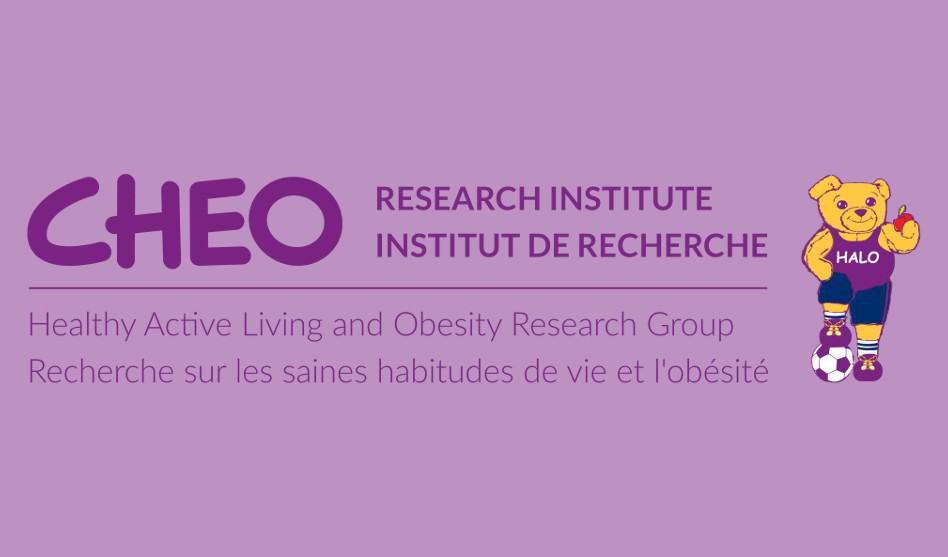HALO Post-Doctoral Fellows, Dr. Michelle Guerrero and Dr. Scott Rollo, recently presented at the Canada Society for Exercise Physiology (CSEP) annual scientific conference. This year, in accordance with COVID-19 policies, CSEP hosted their event online (https://csep2020.csep.ca/). Michelle made an oral presentation titled “Results from Canada’s 2020 ParticipACTION Report Card on Physical Activity for Children and Youth”. Scott presented a poster titled “The whole day matters: Understanding 24-hour movement guideline adherence and relationships with health indicators across the lifespan”. Abstracts of the presentations are below.
Congratulations, Michelle and Scott, on your successful presentations!
- Guerrero M. Results from Canada’s 2020 ParticipACTION Report Card on Physical Activity for Children and Youth. Canadian Society for Exercise Physiology 2020 Conference (online), October, 2020.
The ParticipACTION Report Card on Physical Activity for Children and Youth is the most comprehensive assessment of child and youth physical activity in Canada. It provides a “state of the nation” that assesses how Canada is doing at promoting and facilitating physical activity opportunities for children and youth. The purpose of this presentation is to summarize the results of the 2020 ParticipACTION Report Card. Fourteen indicators were graded by a committee of experts using a process that was informed by the best available evidence. Sources included national surveys, peer-reviewed literature, and grey literature such as government and nongovernment reports and online content. Grades were assigned to Daily Behaviors (Overall Physical Activity: D+; Active Play: F; Active Transportation: D-; Organized Sport: B; Physical Education: D+; Sedentary Behaviours: D+; Sleep: B; 24-Hour Movement Behaviours: F), Individual Characteristics (Physical Literacy: D+; Physical Fitness: D), Spaces & Places (Household: C; School: B-; Community and Environment: B+), and Strategies and Investments (Government: B-). Similar to previous years of the Report Card, Canada generally received good grades for indicators relating to investment, infrastructure, strategies, policies, and programming, and poor grades for behavioral indicators (e.g., Active Play, 24-Hour Movement Behaviours).
- Rollo S. The whole day matters: Understanding 24-hour movement guideline adherence and relationships with health indicators across the lifespan. Canadian Society for Exercise Physiology 2020 Conference (online), October, 2020.
The purpose of this systematic review was to examine the associations between the 24-h time-use composition of movement behaviors, or adherence to 24-h movement guidelines, and multiple health indicators across the lifespan. Five online databases were searched for relevant peer-reviewed studies published between January 2015 and January 2020 that met the a priori inclusion criteria, with no study design limits. The methodological quality of research evidence for each study and health indicator was assessed using a modified version of the Downs and Black checklist. A total of 51 studies from 20 different countries met the inclusion criteria. Findings indicated that meeting the 24-h movement guidelines were (i) not associated with adiposity among toddlers, (ii) favorably associated with health-related quality of life, social-cognitive development, and behavioral and emotional problems among preschoolers, (iii) favorably associated with global cognition, health-related quality of life, and healthy dietary patterns in children, and (iv) favorably associated with adiposity, fitness, and cardiometabolic, mental, social, and emotional health among children and youth. Significant associations were also found between the composition of 24-h movement behaviors and indicators of (i) adiposity and bone and skeletal health among preschoolers, (ii) health-related quality of life among children, (iii) adiposity, fitness, and cardiometabolic, social, and emotional health among children and youth, (iv) cardiometabolic health in adults, (v) adiposity and fitness among adults and older adults, and (vi) mental health and risk of mortality among older adults. The quality of the available evidence ranged from “poor” to “good”. The current evidence indicates that the composition of movement behaviors within a 24-h period may have important implications for health at all ages and that meeting the current 24-h movement guidelines is associated with a number of desirable health indicators in children and youth.



